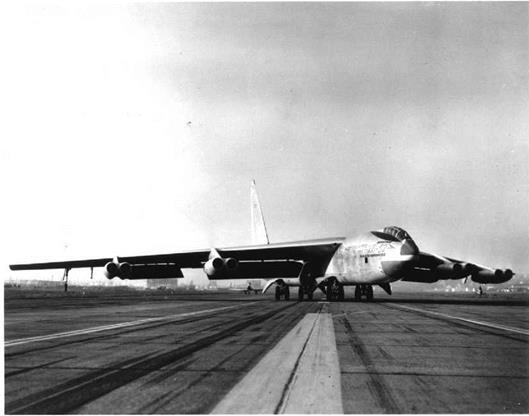The B-52 Elevator Also Has Limited Control Authority
The B-52’s elevator is as narrow in chord as is the rudder. It depends on help from an adjustable stabilizer for long-term trim and airspeed changes. As in the case of the vertical tail, the original Boeing design called for an all-moving horizontal tail, but this was abandoned because of doubts as to hydraulic actuator reliability.
The B-52’sadjustable stabilizer isdriven by two independent hydraulic motorsthrough an irreversible screw jack mechanism. One motor drives the jackscrew and the other the live nut on the driven screw thread (Figure 7.6). The control valve for each hydraulic motor is worked
|
Figure 7.5 B-52 Stratofortress in a crosswind landing attitude. The landing gears are pointed down the runway while the airplane is yawed to the left, presumably into the relative wind. Crosswind landing gear reduces the need for rudder power. (From Loftin, NASA SP-468, 1985) |
either by an electric motor or by a backup cable drive from the cockpit. The electric motors are controlled in turn by the usual push-button arrangement on the pilot’s control yoke.
With all of this redundancy, stabilizer adjustment failures can still occur, but the B-52 is landable in an emergency with elevator control alone, regardless of stabilizer position. Some center of gravity adjustment by fuel pumping is necessary for this to work.















